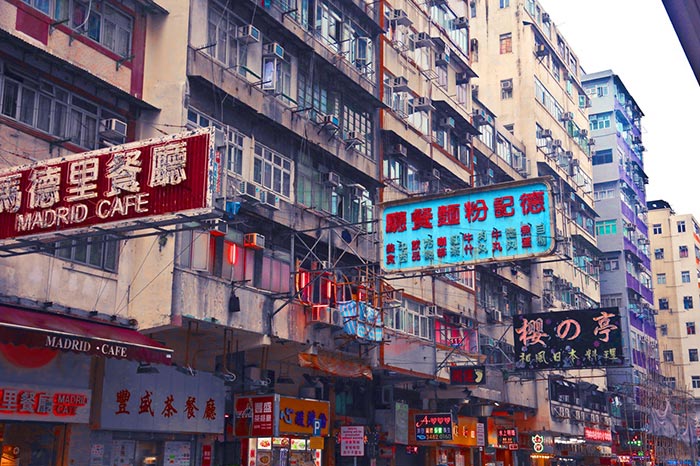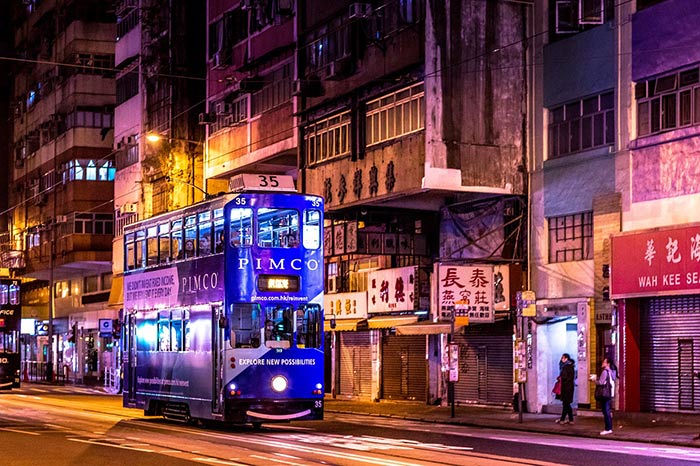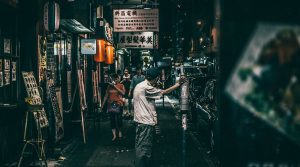Written From… The sofa inside my campervan, Xugito, Australia
When arriving into a new country one of the first things I always ask myself is “how do I use the public transport system”. I think this question comes from having grown up in a city – London – where cash is no longer accepted on public transport. I saw our transport system go from paper tickets and cash on buses, to what we call Oyster cards. So when we touched down in on the first stop of our gap year I had to ask ‘how does the transport in Hong Kong city work?’
Whenever I go somewhere new I always stop to wonder “Can I even use my change to get on a bus?” I don’t want to get stuck trying to board a bus only to realise I have to go back to the station I was at 15 minutes prior to buy a travel card from the information desk.
For that reason, I wanted to share my experience of using the public transport in Hong Kong. So you won’t have to worry when you get there as you’ll already know what you need and the rules that apply.
Hong Kong international airport
When landing in Hong Kong internationally there is a high possibility that you’ll be landing in Hong Kong International Airport. From here you can take the Airport express to the part of Hong Kong on mainland China, or you can continue on to Hong Kong Island. This express line only stops at 4 stations.
During my trip I stayed on the island – I highly recommend – and got off the Airport Express at Hong Kong Central Station. This turned out to be a short journey, only around 30 minutes – you can expect to be sightseeing in no time once you arrive. The Airport Express runs around every 10 minutes from 05:54 – 23:28 and around every 12 minutes from 23:28 to 00:48.
To buy tickets for the Airport Express you can go to an information point in the arrivals hall of Hong Kong international airport. From here the clerk will ask you – showing you a map – which station is your destination. My journey to Hong Kong Central Station was around $110 (HKD).
Once on this train, rolling into Hong Kong city, you will see the mountains, the skyscrapers and the clear blue waters of the harbours. If you want the best landscape views be sure to sit on the left hand side of the train (of the direction in which the train is travelling).

Hong Kong city
Once in Hong Kong city and off the Airport Express, you may still need to take a short journey to your hotel. How you do this is up to you – walk, train, taxi, tram – but this is where I want to talk to you about getting around the city: the transport modes, what you’ll need to make a journey, the costs, and the rules.
MTR Hong Kong
The train network, MTR Hong Kong, is super easy to navigate. It’s very similar to most networks around Europe. Different coloured train lines going to different final destinations, crossing at certain points – just like the London Underground. There are 9 lines running throughout Hong Kong and Hong Kong city and you can use the train maps to manually work out which lines you need.
Or you can cheat like I always do and use Google Maps. Once on the train there are smaller maps located above the doors which show the route the train is taking, the direction it is going in, and what the next stop is. This gives you a feeling of comfort as you’ll always know how many stops there are until your destination.
Hong Kong ferries
I don’t think you can go to Hong Kong without taking a ride on at least one ferry. Whether that be to visit Victoria Harbour, the mainland or one of the many stunning islands such as Lamma island dotted just off of Hong Kong Island’s shores.
Trams in Hong Kong
There are small – in width – trams that have been operating since 1904 around the northern side of Hong Kong Island, taking passengers from the west to the east and back. When I first got to the Island and saw the trams in Hong Kong I just had to get on one, as in some weird way they reminded me of the night bus in Harry Potter – maybe it’s their thin, tall appearance.

The Octopus card
Throughout Hong Kong you’ll see people tapping in and out of stations using a little plastic card. This is called an Octopus card. An Octopus card allows you to top-up a prepaid value and pay for transport as and when you use it, deducting money every-time you complete a journey by tapping in and out. Using an Octopus card is the most efficient way to get around Hong Kong as you can use it on all modes of transport and you don’t have to worry about buying a new ticket everyday.
You can buy an Octopus card inside train stations at the information points. In total for one Octopus card I spent $150, $50 for the card and then $100 credit for traveling. When your credit is running low you’ll be able to top-up your Octopus card using the self-service points around the stations.
Being from London – if you know how the London transport system works you’ll know you can pretty much top-up as much or as little as you like. I thought, on my last day, I could just top up $10 to get me to my final destination, turns out I was wrong.
The minimum amount you can top-up is $50. Luckily for me, with the leftover money I had on my card I was able to use the credit in shops such as 7/11 to purchase anything.
MTR tourist day pass
If you’re only going to be in Hong Kong for a couple of days then you may instead choose to opt for a MTR Tourist Day pass. This pass is super convenient to dash all around the city, seeing as much as you can in a 24 hour period. The ticket is valid on the entire MTR Hong Kong network, lasts for 24 hours and is only $65.
Single tickets
Of course, if you’re not going to be doing much traveling on public transport and don’t wish to spend money on travel cards then you can choose to purchase single journey tickets from the self-service machines.
Rules
I noticed that on all of the public transport throughout Hong Kong there was one big rule besides the obvious – having a valid ticket – no eating or drinking.
Some useful stations to remember when travelling around Hong Kong are: the airport – for obvious reasons – Hong Kong Central Station, as a larger number of the train routes cross through here including the Airport Express, and Jordan Street, for the mainland and night markets.
Getting around Hong Kong is pretty easy and once you start to remember what train lines cross with each other you’ll be doing it without needing to check the map every 5 minutes.






